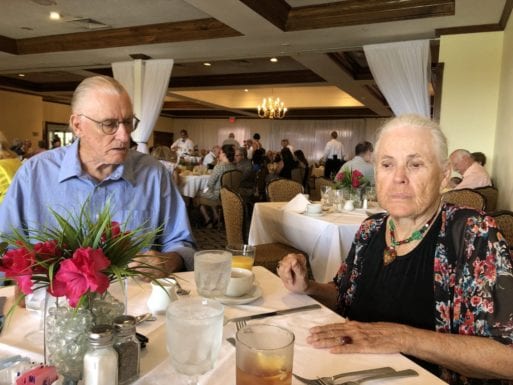
Roger and Susan Sherman at dinner just as Susan’s dementia begins to impact her functional abilities. Before she died, they had a conversation about rational suicide.
“I know someone who has done it with the gas. She had a peaceful death with a son on each side holding her hands. I like that — no prescription necessary! You go to the party store and maybe you have a party.” Aunt Kate, the lively 82-year-old on the other end of the phone, paused. “There’s the old Sylvia Plath method, I guess … but the newest idea I’ve heard is using dry ice. You have to be in a very small, enclosed space for it to take the oxygen out. And you need to be careful to judge your space correctly and how much dry ice you need.”
“Aunt Kate” and I were discussing all the ways she could kill herself. She is not my aunt — it was her nephew who put us in touch. According to him, she had been collecting ideas for her own death for quite some time. One idea she had shared with him included freezing to death in a snowbank while drinking gin and tonics. Naturally, I called her to learn more.
“Death isn’t scary to me because I’ve worked in it.” Kate worked as a social worker for most of her life, and later as a public guardian, where her work brought her into many hospitals and nursing homes. “Some of the people I worked with were on their way to dying, some died, and others you wished that they could die.” Later, Kate worked with the writer Jessica Mitford, author of “The American Way of Death,” which was first published in 1963 and exposed abuses in the funeral industry.

Aunt Kate has had many conversations over
a cocktail with her nephew about her desire
to not die painfully. She has secretly noted
to him, “I’m counting on you.”
Kate currently resides in an upscale retirement community in Northern California and said of the place, “What interests me is we all eat in a big wonderful dining room, there’s vibrant conversation, big get-togethers, but nobody talks about death, dying or illness … which is different from my younger friends who are always talking about how they feel. It’s a stereotype that it’s not dinner conversation. But the older you get, you know you’re getting close. I certainly have a lot of thoughts about ‘how much longer?’ ‘How long will my money last?’ ‘Is it going to be a painful death?’ ”
This idea of deciding to kill oneself after carefully considering one’s quality of life is known as “rational suicide.” And when reasons for rational suicide are specifically related to the experiences of old age, it’s called “old age rational suicide,” as noted in 2016 by the Society for Old Age Rational Suicide, an organization in the United Kingdom now known as My Death, My Decision.
Using definitions from Dr. Sharon Valente and Donna Trainor’s 1998 paper “Rational Suicide Among Patients Who Are Terminally Ill,” “rational” here is defined as “capable of deliberating, with no coercion, according to one’s own values and purposes in life.”
Not all regard the idea of older adults wishing to hasten death as a rational decision. Many believe suicide and rationality to be mutually exclusive concepts — after all, what could be rational about wanting to kill oneself?
This discordance was illustrated in a 2019 article entitled “Can Suicide Ever Be Rational?” In it, Dr. Al Giwa, an emergency room doctor with a master’s degree in bioethics, recounts an exchange he had with a patient with pancreatic cancer. “My training and practice had implied all patients who presented with suicidality had a “mental problem” and did not have the capacity to make their own medical decisions. However, here I was talking with a clearly rational and intelligent man, who was telling me with clear logic, understanding, and appreciation of the consequences of his planned actions, that he wanted to end his life.”
While health care and legal authorities might regard any sign of suicidality as irrational, for many Americans, killing oneself in the face of a painful, drawn-out or life-limiting disease seems very rational. Gallup polls from 2015 to 2020 show a slow and steady growth of individuals in the United States (74%) who agree that “when a person has a disease that cannot be cured … doctors should be allowed by law to end the patient’s life by some painless means if the patient and their family request it.”
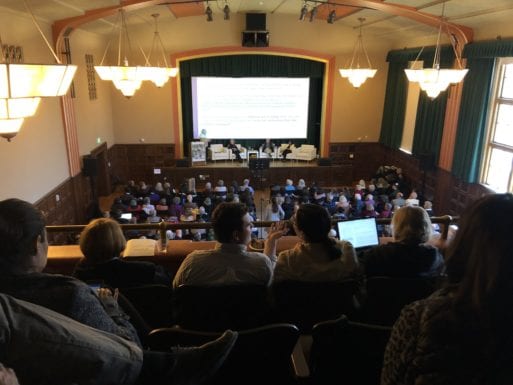
The first ever National Clinicians Conference on Medical Aid in Dying (NCCMAID) took place in February 2020 in Berkeley, California. It still remains to be seen if rational suicide will be accepted by the medical profession.
This widely held opinion explains why medical aid in dying (also known as physician-assisted dying or physician aid in dying) is currently legal across nine states and Washington, D.C. While specific requirements vary from state to state, the general idea is that someone can receive a life-ending prescription from their doctor, should they meet the qualifications. Those qualifications typically include a six-month prognosis and approval from two separate doctors. Notably, diagnoses that affect functional abilities such as Parkinson’s, Alzheimer’s disease and dementia do not qualify.
Patient advocacy groups like Compassion & Choices have helped progress medical aid-in-dying legislation, and their work supports the expansion of compassionate end-of-life options, especially for those who have been diagnosed with dementia. I reached out to Compassion & Choices for their comments on rational suicide but did not hear back.
Here I should note that many medical aid-in-dying advocacy groups distance themselves from the term “suicide” or even “rational suicide,” while those who object to medical aid in dying often use the term physician-assisted suicide, suicide, or even euthanasia. Further, medical aid-in-dying statutes specify that participation under them is not suicide. If one’s death results from taking medications legally prescribed under a medical aid-in-dying statute, the death certificate will list the person’s underlying illness as the cause of death. Most life insurance policies will not pay out when suicide is the cause of death.
Even groups such as the Final Exit Network (formerly known as the Hemlock Society), who provide education for those who do not qualify for medical aid in dying, do not call the act of ending one’s life suicide. They call it self-deliverance.
So, while doctors, lawmakers and advocates debate and move forward and backward about legalizing medical aid in dying, more and more aging seniors and their friends, partners and children are quietly, and rationally, discussing how they want to die.
Rational Suicide in Context: The Emotional Impact of Aging
One driver of these conversations is the fact that our society is acknowledging and talking about death more than we ever have. Roger Sherman, a 92-year-old widow living in Florida, said of the change, “When I was a child, death was shrouded in black and misery and tears. Now, people celebrate death by throwing flowers in the ocean, having a party. Things are different than they used to be. When my grandchildren came here to visit, I wondered if they thought this would be the last time they would see me. Forty or 50 years ago, no one would even consider thinking that.”
Sherman, who has been diagnosed with dementia and whose wife died in March 2020, had brought up the idea of rational suicide to her when her health and mobility had begun to fail. He had read a short story in which a husband and wife parked their running car in the garage (in the style of Henry Dreyfuss and wife) to die peacefully together. The idea appealed to him.
Recalling the conversation, Sherman said, “I did bring it up to her, but we never had any huge discussion about it. My wife was more open about life and all of its complexities.” He paused. “For me, being lonely is a big part of it. When you’re with someone for 71 years … ”
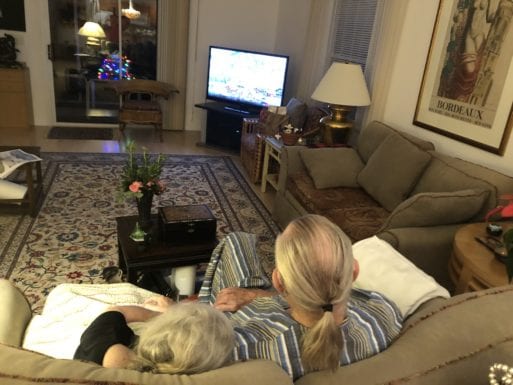
Roger and Susan Sherman of Sumter Landing in The Villages, Florida,
before Susan’s death in 2020.
Yes, it would be myopic to say that pain and disease are the only reasons people consider rational suicide. Loneliness, quality of life, and fear of aging can all play a role.
Anthropologist Dr. Naomi Richards has studied this topic in depth, publishing her findings in a 2017 article titled “Old Age Rational Suicide.” In it, she noted that despite the absence of life-threatening disease, “one of the stated motivations of some older people requesting hastened death has been that … they feel ‘tired of life’ or that they have lived a ‘completed life’ and feel ready to die.”
Dr. Meera Balasubramaniam, a geriatric psychologist, has also focused her recent work on rational suicide in elderly adults.
In a GeriPal interview, Balasubramaniam stated: “If we adopt the stance that [wanting to hasten death] is conclusively irrational, we are at risk of shutting down our older adults who want to talk about the sense of ambivalence they have about life. We need more research in this area to try to understand what it’s like to grow old, what it’s like to be dependent, and what it’s like to have this anxiety about what is going to happen. And we need to hear it from people who are in that place.”
“It’s not all medical and it’s not all going to be in the DSM-5. People can have job loss, one failure too many, loss of a significant other, or loss of livelihood — they can be exhausted, lonely, bored, and weary.” This observation comes from Peggy Flynn, a 72-year-old healthcare worker who spent decades working intimately with the dying as a caregiver in San Francisco. Flynn is the author of “The Caregiving Zone” and a co-founder of the nonprofit The Good Death Institute, Inc. She currently resides in Wisconsin, and continues her work in aging and dying with geriatric care consulting, spiritual direction and a regular blog entitled In the Evening of Life.
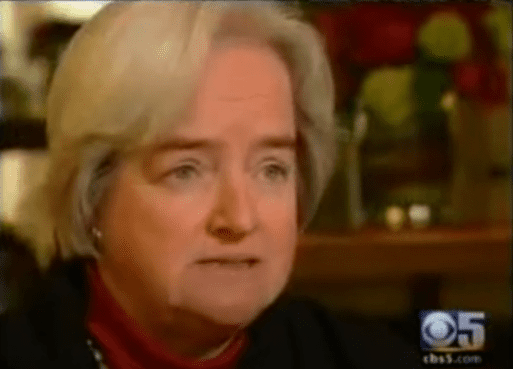
Peggy Flynn being interviewed in 2007 in San Francisco, California after receiving the Jefferson Award for her book “The Caregiving Zone.”
“Part of it is to talk to a person about what would make [life] worthwhile. I have a friend who is 102 and she’s made her peace with how she’s living — her perspective is ‘As long as I’m alive, what contribution can I make?’ But I have another friend who is 87, and he gets quite weary.”
What Kate, Flynn and Balasubramaniam have in common is they approach rational suicide from a place of curiosity. One that asks: “What is it that scares people about growing old in the future?”
Kate said, “You don’t really think about it, and then as you get older, 60 or 70, you start thinking about it more. Every new ailment brings thoughts and the body starts being so undependable. And if you keep seeing people dying of cancer, you think, ‘I don’t want that.’ If you’re old and you’ve lived your life, why spend the last 3 years in and out of surgery? There are some people who fight, but that’s always the individual’s choice.”
Individual Choice: Two Diagnoses, Two Approaches to Death
Richard knew two women diagnosed with brain cancer. One chose rational suicide, the other opted to fight until death took her.
Phyllis, a longtime family friend, was 72 years old when she was diagnosed with brain cancer. Richard recalled the farewell meal the two of them had after her diagnosis. “She decided she would end her life by taking pills. She had a friend who agreed to be with her for the last couple of weeks, and during that time, she made her goodbyes. We went out to breakfast and we had an awkward but poignant and sweet goodbye. And I think that was the most notable thing … to say goodbye to someone and know that they’re going to die.”
“Phyllis was Jewish, so there’s a tradition of sitting Shiva, so they all did that for Phyllis. They wanted me to be there … ” Richard’s voice caught for a moment and then he said, “I couldn’t go. I was too emotional about Meredith.”
Meredith. While Phyllis was saying her goodbyes on her way to death, Richard was facing the inevitable death of another woman — his girlfriend. “Eight or 9 years earlier, it was inflammatory breast cancer, and she had one year to live, and she miraculously lived and got stronger. But after a few years, it spread somewhere else in her body, then she had one year left to live again. And she got better, and then sick, and then better, and sick. And then, they told her she had brain cancer.”
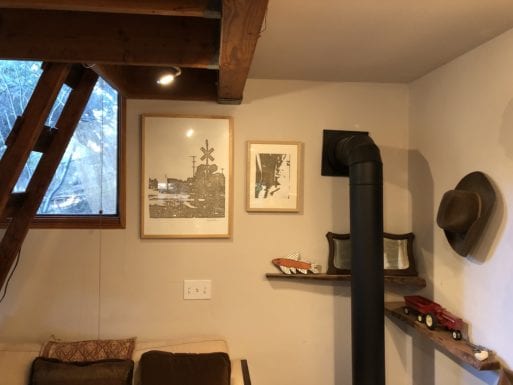
The inside of Richard’s home. Richard, who prefers to remain anonymous, had a family friend who opted for rational suicide in the face of brain cancer.
Unlike Phyllis, Meredith opted for all the treatments, deciding to do everything she could to prolong her life. And according to Richard, Phyllis had said to him about Meredith: “She should just do what I’m doing. It will never be good; it will always be hard.”
So why did one woman opt for rational suicide and the other did not?
Age was most likely a factor. Phyllis was around 70 years old and Meredith was 40. Also, Meredith had already won a battle against cancer, which may have bolstered her. Richard pointed out further juxtapositions between the two women: “Meredith had a young child and a lot of friends. Phyllis was a bit more isolated. Meredith was also very strong and vibrant, and I know that can have an effect on survivability.”
I asked Richard, who is 57, what he would do if he were in their position now. “I don’t know. After watching Meredith battle an illness that drags on and on … the anticipation is pretty exhausting. It does give you time to be with people, get in a few final adventures and take care of things, but there’s something to be said for a sudden death.”

Robert Lind has considered rational suicide as an option for his future.
I would agree, and so would Robert Lind, a 68-year-old man living in Las Vegas, Nevada. Both of Lind’s parents died of cancer in a nursing home at the ages of 90 and 93. Lind described their end-of-life experience: “I saw what they went through. Basically, different versions of being bedridden and then every once in a while, someone comes over and says ‘hi.’
“I assume I will end up like they did, but I don’t have kids so I won’t even have that. I could be living isolated at home, with little interaction with the outside world, and I might decide that my quality of life might not be worth living.”
When asked if he would consider rational suicide if he were in his parent’s shoes, Lind stated, “I don’t know how I will feel. My perspective might be different then. The instinct for self-preservation is so strong … but you have to ask yourself, ‘How much enjoyment do you get out of life?’ ”
The Consideration and Cost of Dementia
Dying a prolonged, painful death from cancer is one thing many people fear, but what about dementia?
A friend of mine, who has requested to remain anonymous, has a mother at risk for early onset dementia. He and his mom have agreed that when she is “ready,” she will request his presence (and potentially his assistance) to end her life, most likely using pills.
For many Americans (45%) the idea of being confused all of the time is a fate far worse than death. And, if one does not plan for their end-of-life experience, a dementia diagnosis could eventually render them legally incompetent and incapable of making any decisions for themselves, forcing family members to decide for them.
According to a January 2021 poll of 1,148 adults conducted by Final Exit Network and YouGov, the idea of giving still-competent adults with early-stage dementia options for hastening their death appealed to the majority of respondents. Fifty-three percent supported the idea, 31% were neutral, and only 15% opposed the idea altogether. Among those who had a family member with dementia, support increased to 59%.
While the sample size is small, this recent poll reflects the larger trend across America that we want more options than simply enduring the irreversible loss of mental and bodily function that is part and parcel of dementia and Alzheimer’s. According to a 2019 report by the Center for Disease Control, 60% of people with dementia spend their last days in a care home, compared to 28% for other illnesses. For many, the idea of being placed in a nursing home signifies loss of selfhood. Not to mention it can be a crippling expense.
“Even if they have nice names, nursing homes are for-profit.” This reminder came from Flynn, who has spent much of her life working as a caretaker.
“I consulted with someone last year. Their friend was far enough on the Alzheimer’s scale that they couldn’t pass a [cognitive] test. But I had to tell my friend, it’s too late. And the person had $100,000 or so, which is a pittance in terms of memory care.”
So what are the options and the consequences for someone with dementia? If a person helps a loved one who is deemed “legally incompetent” end their life, the penalties can be severe. According to California’s “Aiding a Suicide Laws and Penalties,” if one were apprehended, it would result in a felony charge with potentially a three-year jail time or less at the state prison (with possibility of parole instead) and a fine of $10,000 or less.
Flynn put the numbers into a different perspective. “Look at the punishments — up to $10,000 fine in California? That’s nothing. In Milwaukee, $10,000 a month is how much it costs for good memory care. So most people won’t indulge [the nursing home] discussion. Dad’s gonna say, ‘I want this money to go to your kids’ college,’ or they say nothing and go and blow their brains out in the barn. It does make you think, ‘What percentage of vehicular accidents are actually suicides?’ ”
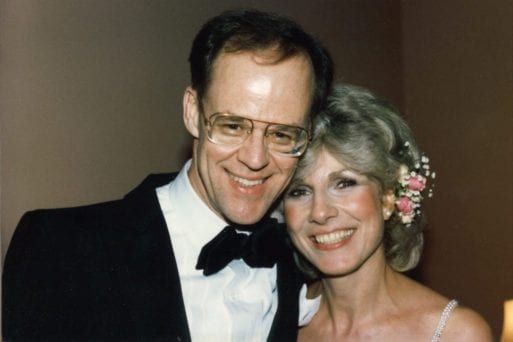
Diane Rehm has been vocal about end-of-life options based on her experience with her husband of 42 years, John Rehm, who died of Parkinson’s disease. He chose to stop eating and drinking on the advice of his physician. Photo is of Diane and John on their 25th wedding anniversary.
Credit: compassionandchoices.org
There are legal ways to kill oneself. Voluntarily stopping eating and drinking is available to just about anyone who is still deemed “mentally competent.” It is essentially death by dehydration and, all told, not the most comfortable way to die. Diane Rehm’s husband, John, died this way. Diane hosted the award-winning NPR program “The Diane Rehm Show” for nearly 40 years and now hosts the podcast, “On My Mind.“
John Rehm did not have dementia, but Parkinson’s, another illness that severely affects physical function. In 2014, Diane and John called his doctor seeking assistance to help end his life. At the time, John was unable to use his limbs or feed himself. According to the account told by Diane Rehm to NBC, he knew his condition was only going to get worse rather than better. And knowing that, he said that he wanted to die.
Because they lived in Maryland, where medical aid in dying still is not legal, their doctor was unable to help. Instead, John had to deliberately die through voluntarily stopping eating and drinking. It took nine days.
Though John had only this one legal option to end his life, that is still one more option than those who have been deemed “legally incompetent” have. Even if someone with Alzheimer’s or dementia has an advanced care directive stating they want food and water to be withheld at a certain point, there is no guarantee their wishes will be followed.
Sandra, a healthy and active 80-year-old woman, disclosed to me she’s planning on voluntarily stopping eating and drinking when she feels it’s her time. “My fear is that I’ll end up with dementia and won’t remember that I want to do anything.”
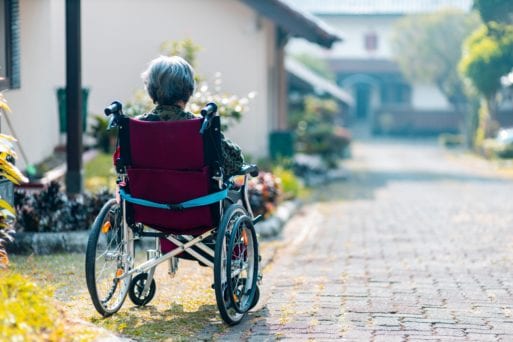
Because advance directives aren’t legally binding, those with Alzheimer’s or dementia are often stuck in an ethical quagmire when it comes to rational suicide.
Her fear is a very real one. The ethics of voluntarily stopping eating or drinking, or VSED, in relation to those with dementia is a topic of hot debate. One opponent, Ann M. Heath, published an article in the 2016 edition of The National Catholic Bioethics Quarterly, holding that VSED by advance directive or by proxy is a “passive form of euthanasia.”
She also noted that it differs critically from when a mentally competent decision-maker (such as John Rehm) chooses VSED, because the person with advanced dementia lacks “the ability to change one’s mind and reverse the decision at any point in the process.” Because of this, she and other opponents say caregivers should not be forced to withhold food and drink from someone who is not showing distress or resisting being fed.
As outlined in this article by RN Julie Christenson, Heath’s argument brings up the consideration of whether or not it is “appropriate for caregivers or facilities to be able to conscientiously object.” And because advance directives are not legally binding, those with advanced dementia can be stuck in the ethical quagmire between whether or not the wishes of their “then” self vs. their “now” self should be honored.
Diane Rehm reported that she doesn’t want that type of uncertainty for herself. As quoted in the NBC interview: “I will hopefully someday, with the help of a kind physician, be able to end my life when I choose.”
While that’s currently not a possibility in the United States for people who are not terminally ill, it is in Canada. In 2016, Canada made medically assisted death legal. And in 2021, they passed another bill to broaden access to allow people with a serious medical condition to apply, even if their death is not considered imminent. This is different from most legislation in the United States in which one must have a terminal condition with six months or fewer left to live to be eligible.
Give Me Liberty and Give Me Death!
When faced with a diminishing quality of life, people want more options than dehydration. And the aging boomer generation is well aware other options exist. Compared to their predecessors, boomers have had more exposure to drugs throughout their lifetime, and often have easier access to drugs for ending their lives.
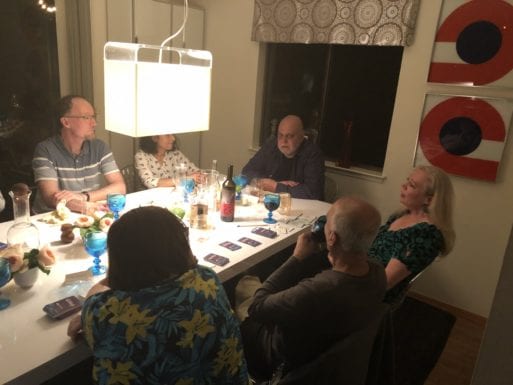
Baby boomers at a dinner party engage in conversation about their end-of-life wishes. Boomers have a greater comfort level than previous generations discussing everything from their own parents’ deaths to their concern about how they will die.
Anecdotally, most people say that opioid-based pain medications or even heroin sound most appealing. Robert Lind said, “Whichever is the most painless way to go. Just give me a shot of heroin. Or something painless and quick. I would have to figure out how to do it.” And Kate: “I’m all for drugs. But you don’t know if you’re giving yourself the right dose — you might be giving yourself brain damage, and a lot of drugs will just make you vomit.”
Flynn, who has worked with the dying, agrees. “I hope that [it does become legal], because it’s such a mess when amateurs do it. People get drugs according to a book, which is predicated on someone who is wasting away from cancer. So if you get someone who has Alzheimer’s or dementia or is in otherwise good physical health, they’re going to take [the pills] and just take a nap and then wake up.”
Derek Humphrey’s book “Final Exit: The Practicalities of Self-Deliverance and Assisted Suicide for the Dying,” which was first issued in 1991, presented the idea of using inert gases with a plastic bag over the head, which is one of the quicker ways to kill oneself. “It may not be aesthetic, but it is effective.”
Talking about how we want to die is also not “aesthetic,” but when it comes to getting your end-of-life wishes known and respected, it is effective — far more effective than simply assuming the values of your family or the current medical system will line up with yours when you’re ready to die.
Most people I spoke to had watched their parents, partner or friends die a slow, grim — and sometimes very expensive — death. And while they might not know exactly when their time will be, or if they’ll use pills, gas, or gin and tonics in the snow, they do know with certainty they want more autonomy than their loved ones had over their end-of-life experience.
If You Need Help
If you or someone you know has talked about contemplating suicide, call the National Suicide Prevention Lifeline at 1-800-273-8255, or use the online Lifeline Crisis Chat, both available 24 hours a day, seven days a week.
People 60 and older can call the Institute on Aging’s 24-hour, toll-free Friendship Line at 800-971-0016. IOA also makes ongoing outreach calls to lonely older adults.

 As Life Expectancy Increases, More Seniors Find the Idea of “Rational Suicide” Comforting
As Life Expectancy Increases, More Seniors Find the Idea of “Rational Suicide” Comforting



 “As Tears Go By” by Marianne Faithfull
“As Tears Go By” by Marianne Faithfull
 “The Sea” by John Banville
“The Sea” by John Banville















